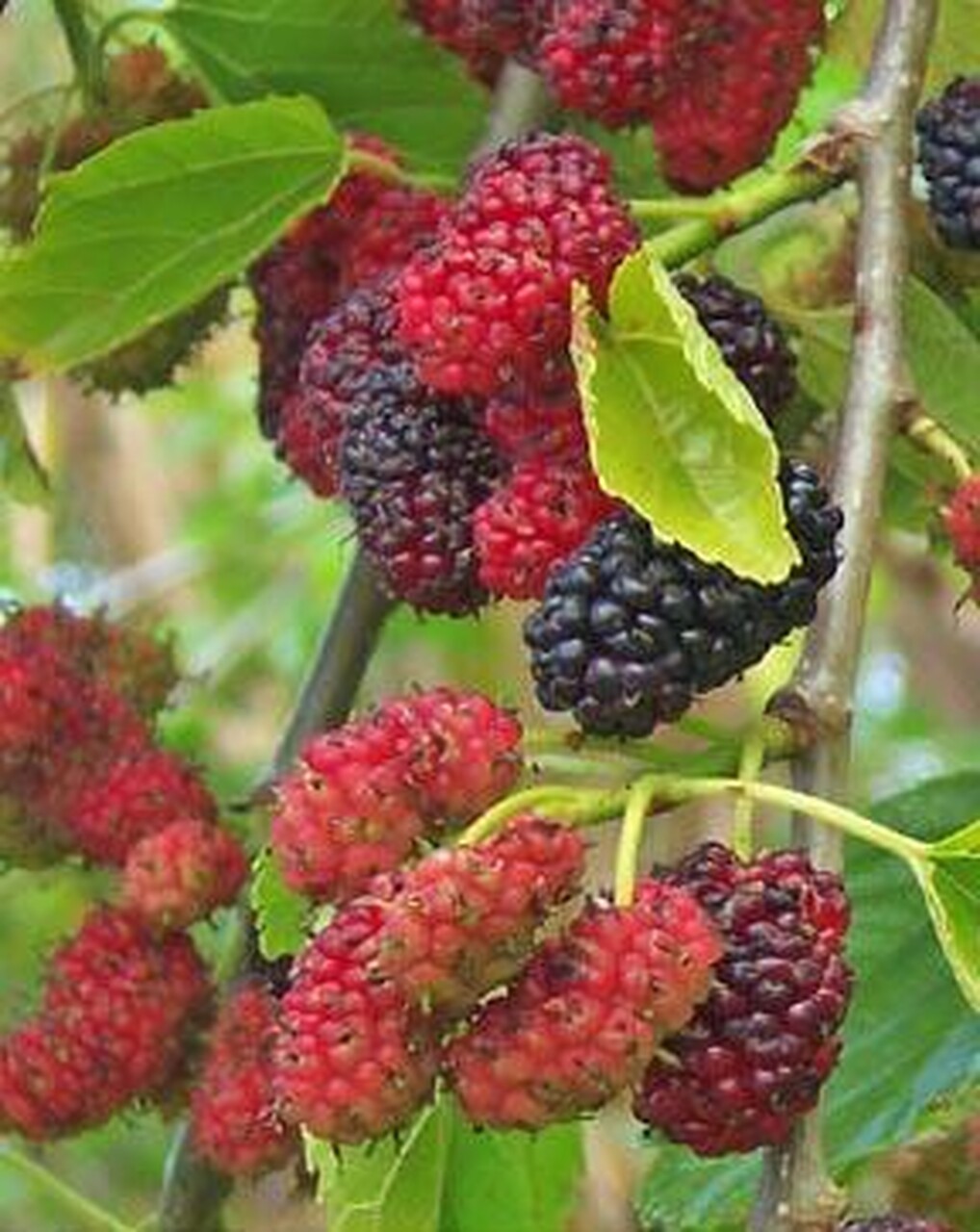Description
Description
Morus rubra, or Red Mulberry, is a deciduous tree that may grow to 30 feet with a short trunk about 2 feet in diameter and a dense, spreading crown. The tree grows throughout North Carolina, usually in the rich, red soils of lower and middle parts of the state, but it is found in all regions. There are no other native species of mulberry in the state.
The leaves are alternate, thin, somewhat heart-shaped, and rough with a toothed margin and up to 3 lobes. The bark is gray-brown with long, scaly ridges. In spring, small, pale green male and female slim, cylindrical flowers mature. The small tree produces a 1 to 1.25 inch long cluster of drupes that mature in summer. Fruit resembles a blackberry and, if eaten when unripe, are poisonous as is the milky white sap that all parts of the tree produces. Fruits that are eaten when ripe are harmless.
The Red mulberry is best grown in rich, moist, well-drained soils in full sun to part shade. It will be at its best in full sun. Prune in late fall or winter to avoid bleeding. It is easily grown from seed or cuttings and may also self-seed somewhat prolifically. It does not do well in poor soil.
The fruits are relished by birds but dropped fruit can cause maintenance issues such as staining concrete walkways, patios, and cars, so be aware of where the canopy will extend when choosing the location to plant one of these trees. These trees can become weedy. Herbicides are not effective, the best management is to hand pull seedlings when young.
Insects, Diseases, or Other Plant Problems: Borers may be a problem with this plant, particularly in the South. Whiteflies mass on some trees. Bacterial blight may kill foliage/branches. Coral spot cankers may cause twig dieback. Bacterial leaf scorch, powdery mildew, root rot, and witches broom may also occur. Watch for scale, mites, and mealybugs. Weedy self-seeding and messy fruit are concerns.


Reviews
There are no reviews yet.